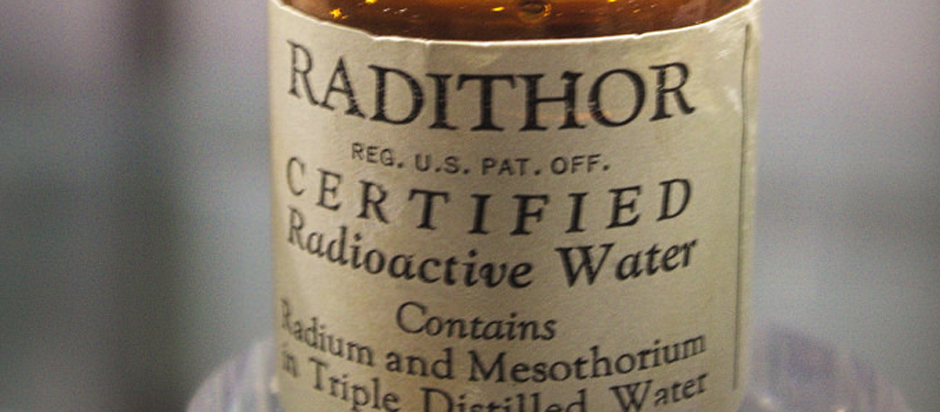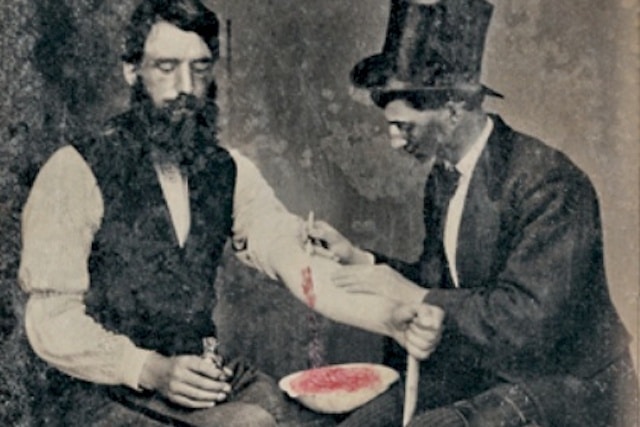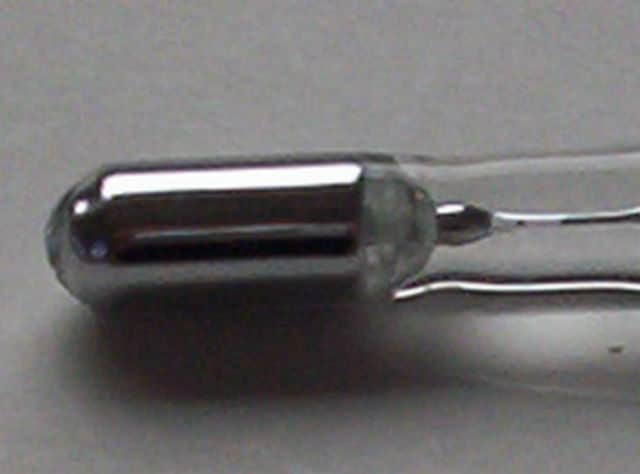Someone once said that life doesn’t come with an instruction book. It’s a learning process and, as a species, we have had a few bumps in the road along the way. The first person who ever met a tiger may have thought ‘what a nice looking kitty’ before learning the error of their ways. Likewise, there have been a number of other things that we used to think were safe and healthy but turned out to be pretty bad for us.
10. Hardcore Narcotics

Since modern painkillers like morphine are derived from the same source as things like opium and heroin, it’s maybe not that surprising that back in the day opium and heroin were widely distributed as everyday painkillers. Even cocaine had a good run as a medicine for toothaches and an ingredient with which to fortify wine.
Obviously these products work so it was hard to argue with the results. If you put it in some over-the-counter medicine and it made people feel better, then it seemed like maybe it was a miracle cure. It just took a while for the medical establishment to catch on to the fact that they were doing more harm than good by loading people down with heroin every time they had a scraped knee.
Once upon a time if your baby was teething, you would give it morphine or even some cocaine to solve the problem. If you had a nasty bout of diarrhea, a doctor was going to give you some opium to fix it right up for you. At the very least you wouldn’t care that you had diarrhea anymore.
9. Asbestos

Today we know that asbestos brings with it the incredibly nasty side effect of cancer. Even though asbestos hasn’t been allowed to be used since the 1980s, 40,000 people in the US died of asbestos-related cancer in 2016 alone due to past exposure. Short-term asbestos exposure is not considered an extreme high risk, but it does depend on the circumstance. Many of the people at Ground Zero for 9/11 have experienced some of the horrible side effects as a result of being in a high-risk situation where asbestos was present.
The problem is that asbestos was used constantly. Even the ancient Egyptians used it. It made good insulation in buildings and is completely fireproof. That was an attractive mix for home-builders for decades. Even popcorn ceilings, which are today considered a design aesthetic mistake though they were super popular from the 1930s all the way through to the 1980s, are made from asbestos. It was used in floor tiles and brake pads and the US military used it constantly as protective equipment, even in gas masks.If you have frequent exposure to the dust from these sources, the results can be deadly.
8. Radioactive Toys

Cartoons have a particular way of displaying anything that’s radioactive. You’ll notice a distinctive green glow on everything that’s supposed to be emitting radiation. This is especially notable in episodes of The Simpsons during the opening credits when you see Homer pulling that inanimate carbon rod out of the reactor. Even though this makes a nice, understandable cartoon image it’s not strictly a joke. Radiation does make things glow and for that curious side effect, it was actually used in the number of toys for children back in the day.
Toys like the Kix Atomic Ring featured polonium-alpha particles on a zinc sulfide screen Inside so that you could see little bursts of light as the radioactive particles hit it. It made for a fun visual effect, and the box assured anyone that the radioactive particles were perfectly safe, but that wasn’t entirely true because radiation is never particularly safe. You could get this from Kix, the cereal.
Maybe the most infamous toy from this era was the Gilbert U-238 Atomic Energy Lab. The kit contained radioactive isotopes of zinc, lead, ruthenium, and as the name would suggest also some uranium. Even a bit of polonium thrown in for good measure. In modern times we look at this like a really bad idea but it has been suggested that the radiation levels committed were so low it wouldn’t be much different than being exposed to a day’s worth of UV radiation. But that does come with a caveat being that you can’t open any of the containers that be isotopes were held in. If in child were to break those, then exposure could have been much worse
7. Radioactive Drinks

If general exposure to radiation wasn’t bad enough, then there was the strange habit that the health industry had of including radioactive components in drinks. Back in the 1920s there was a drink called RadiThor that hit the market which was radium dissolved in water. Why would anyone drink radium dissolved in water? Because the manufacturer assured customers that it was able to increase your energy and also heal conditions like impotence.
A man named Eben Byers was known to have been an avid consumer of RadiThor and was said to drink several bottles a day for a period of over three years. Unbeknownst to Byers, when you ingest radium it gets absorbed into your bones. When he died shortly thereafter, he had developed holes in his skull and lost a good portion of his jaw as well.
6. Bloodletting

Modern medicine took a long time to get to where it is today. It is by no means an exact science and a lot of unfortunate trial-and-error has gone into learning how to treat diseases. That is why in medieval Europe it was common practice to treat dozens of conditions by means of bloodletting. Anything from the plague to gout was treated by this practice. It actually dates back much further and was used by ancient Egyptians and Greeks as well.
Although the methodology changed over the years the basic idea was always the same. A sharp tool was used to pierce a patient’s vein to allow blood out. Ancient doctors had been under the impression that many illnesses were simply caused by an overabundance of blood. This evolved into the idea of creating a balance of the four humors in your body which are blood, phlegm, yellow and black bile. If you had too much or too little of any of those it would throw off your health so they needed to be brought back into balance.
It’s believed that bloodletting was in part responsible for the death of George Washington after his physicians took six or seven pints from the man in an effort to treat a sore throat. You only have about 10 pints of blood in your whole body anyway, so in retrospect it’s not surprising that he wasn’t able to survive the treatment.
5. Mercury

You can’t blame our ancestors for wanting to play with mercury. It looks really cool. Unfortunately, looks can be deceiving and mercury is pretty toxic. The history of mercury in medicines is quite tragic considering that it was given to babies to soothe teething and the effects of mercury poisoning are extremely disturbing. In the form of a medication known as calomel, powdered mercury salt was used to treat a number of elements including constipation, headaches and syphilis.
The effects of taking mercury as medicine are varied. Aside from diarrhea excessive and drooling, it causes damage to the nervous, digestive, and immune system. It will damage your lungs and kidneys and as a salt it’s corrosive to your skin, eyes, and your stomach. Extended use can lead to things like memory loss, motor dysfunction, kidney failure, tremors, headaches and more.
Mercury was taken orally by historical figures such as Abraham Lincoln. It was even used in steam baths so you could inhale the vapours to help cure what was wrong with you and at least one Chinese emperor, Qin Shi Huang, was entombed in so much mercury that nobody has even entered his tomb yet even though we know where it is. Huang likely died of mercury poisoning thinking it was the key to immortality and it’s believed that his tomb contains massive rivers of mercury that has left it extremely toxic. Soil samples from outside of the tomb bear this out, so gaining access to it presents a number of challenges both scientific and archaeological.
4. Lobotomies

It’s hard to believe there was ever actually a time when people thought getting a lobotomy was ever going to help someone. Unfortunately this real practice was actually commonplace in the mental health world for years. It’s believed around 50,000 lobotomies were performed in the United States alone, and thousands more were performed in countries like Canada and the United Kingdom.
Lobotomies were first introduced as a cure for a host of mental illnesses. Portuguese neurologist Egas Moniz believes that these mental illnesses were caused by physical abnormalities in the brain. If you could eliminate those physical abnormalities you would cure the illness. His solution was to sever connecting fibrer of neurons in the brain. He did this by sticking what was ostensibly an ice pick up the nose of a patient and wiggling it back and forth. It was as unscientific and as brutal as it sounds. The end of the metal instrument would cut into the brain tissue severing the frontal lobes from the rest of the brain and it did have a distinct effect on the patient’s mental health there after. Unfortunately, it was not a cure.
Many lobotomized patients became extremely docile after the procedure. They lost the ability to feel or express any kind of emotion and they were extremely un-engaged. That’s why today someone might refer to someone as seeming like they’re lobotomized in the colloquial way if they’re zoned out and not expressive.These patients were never the same again, and in many cases were borderline catatonic. In other cases of lobotomy actually made conditions worse and in some it seemed to have no effect whatsoever. Regardless of the outcome, it didn’t cure any mental illness; it simply gave a patient severe brain damage.
3. Tapeworms

If you’ve ever seen a photo of a tapeworm grown into full size, you no doubt felt a little bit squeamish realizing that it’s possible for a six foot long parasitic worm to grow inside a human stomach. And the fact that people used to infect themselves with these things on purpose is even more disturbing.
Like any parasite, a tapeworm needs its host to keep it alive. When you eat food, the tapeworm gets its share and grows bigger as a result. And since there have been reports of some tapeworms getting up to 20 feet long, you can imagine just how much food the tapeworm needs to stay alive.
There was a time when you could buy tapeworm eggs with the intended purpose of ingesting them so that they would help you keep your figure. Tapeworms were a weight loss tool because as the parasite grows bigger, you need to consume massive amounts of calories just to maintain your weight. So if you eat normally you’ll actually lose weight because the tapeworm is consuming most of your food. In a very perverse way, and if you don’t think about it too hard, it sounds like a good idea. The problem of course is that not only do you have a massive and parasitic worm in your stomach, it’s going to continue to consume your food and get bigger, requiring you to eat more and more just to stay alive. Not only that, having the tapeworm leads to all manner of physical ailments because you’re unable to absorb nutrients properly any longer. You’ll feel nausea, weakness, abdominal pain, dizziness and more.
2. Alum
/alum-stone-530686948-57e695c05f9b586c35e449a8-5c45e1624cedfd000185fc9b.jpg)
Alum is the common name for potassium alum. If you’ve ever seen those deodorant crystals for sale, that’s what it was probably made from. It’s also a component in baking powder so it does have a place in the food world. The problem is that it needs to be used safely and you should only be getting small amounts of it, if you’re ingesting any of it at all. Potassium alum and sodium aluminum sulfate, which is also a type of alum, are occasionally used in baking powders and for pickling. It’s approved as a food additive by the FDA, but it has to meet the correct standards. It could only be used in very small amounts.
Back in the Victorian era there were incidents when bakers tried to maximize profits by using cheaper ingredients for making bread. Bread was a major staple of the Victorian diet because it was cheap, plentiful, and filling. Some unscrupulous bakers would try to pad their ingredients by replacing more expensive things with plaster of Paris, chalk and alum. Used in bread, it adds bulk and even whitens the bread to make it look more desirable. However, it wreaks havoc on the digestive system causing either constipation or chronic diarrhea.
1. Smoking

No one in the modern age needs anyone to tell them that cigarettes are bad for them. We’ve all heard for decades now that cigarettes cause cancer and a host of other diseases. And of course the implication is that, prior to these major warnings, it was generally considered that cigarettes were safe. But the history of cigarettes is actually much worse than not thinking that they were bad for you. For a good length of time, cigarettes were pushed as being good for you.
They were some brands of cigarettes that were touted by physicians as being good for your health. Old-timey ads for cigarettes featured doctors lighting up with quotes letting you as a customer know just how smooth and flavorful that particular brand of smoke was going to be. Others featured a satisfied doctor above a quote letting you know how smoking this brand wouldn’t cause any throat irritation whatsoever.
Camel cigarettes posted that more doctors smoke their brands in any other. Viceroy claimed that dentists recommend their brand most. Chesterfield ads claim that scientific evidence proved that there was no danger to your nose, throat, or sinuses by smoking their brand. And consumers would have had no reason to disbelieve the word of so many doctors.